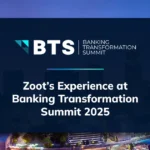If you have ever had the pleasure of hearing Arkadi Kuhlmann speak, you know he is not only entertaining but full of practical insight. In 1996, he introduced consumers to direct, branchless banking as the founder of ING Direct Canada. Four years later he brought it South as ING Direct USA (now CapitalOne 360). Most recently he founded Zenbanx, a mobile banking account that lets customers save, send and spend in multiple currencies. I guess you could say he knows a little something about banking innovation.
During a financial industry presentation last month he joked about the word “omnichannel”, saying it sounded more like a Latin American TV show, than a banking strategy. In his humorous way he was making a plea for banks to stop layering on systems, kill some of their legacy applications, and create a whole new approach.
This is a similar sentiment to one of the top 10 banking trends for 2016 as identified by the Digital Banking Report—the introduction of ‘optichannel’ delivery. The reports states:
Beyond “multichannel” (delivery on multiple platforms), or “omnichannel” (delivery through all channels similarly), an optichannel experience delivers solutions using the best (optimal) channel based on the customer’s need and preferred channel. In other words, rather than offering all channels for a specific solution, big data will enable an organization to point the consumer to the channel that will provide the best personalized experience.
How do banks break away from their legacy systems and deliver these customer experiences?
Kuhlmann encourages banks to change the payments conversation. Consumers want real-time, seamless transactions and to connect social experiences to their money. Facilitate commerce and payments where your customers are, monetize on information, and focus on human interaction and connection.
For example, if consumers are going to Google first to find the answers to their questions, not their financial institution—there’s clearly an opportunity for improvement.
Kuhlmann further emphasizes to banks, “Differentiation is critical. Consumers make choices. You are not going to make progress unless you are different.”
It isn’t an easy process for banks to abandon their legacy technology, but they must if the industry is going to move toward a real-time payments structure that places value on the customer experience rather than simply the utility of moving money. Is your bank ready to change the payments conversation?





